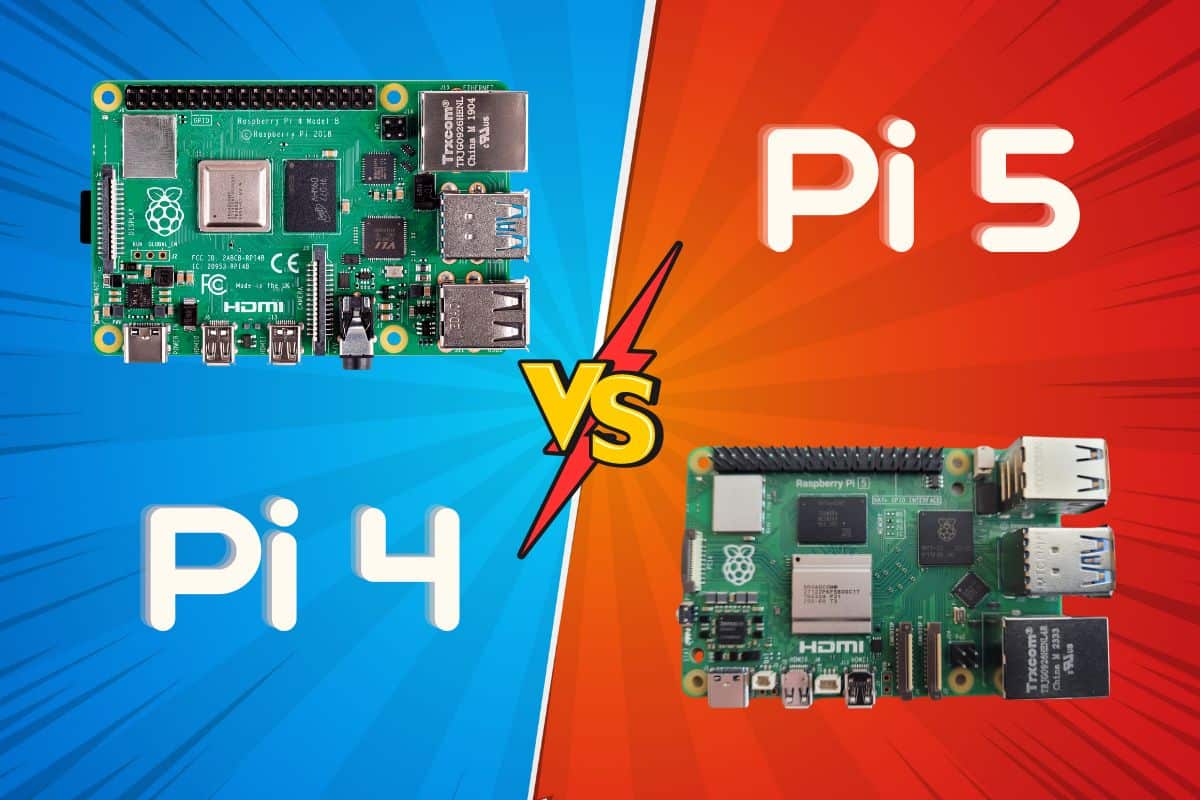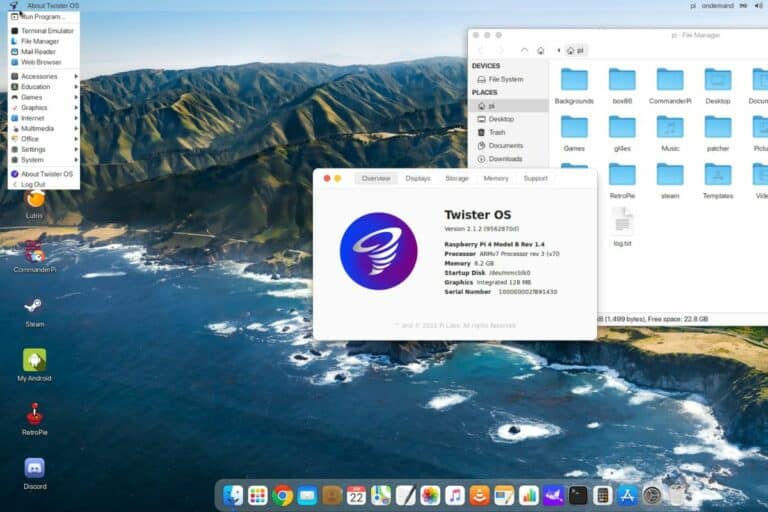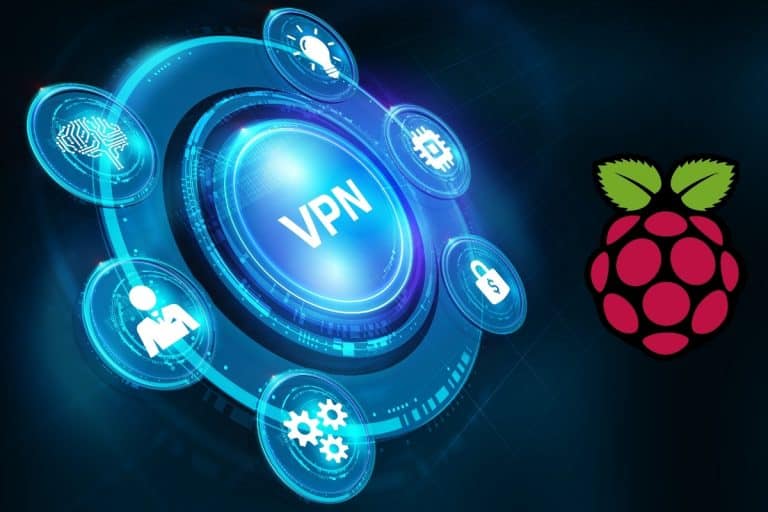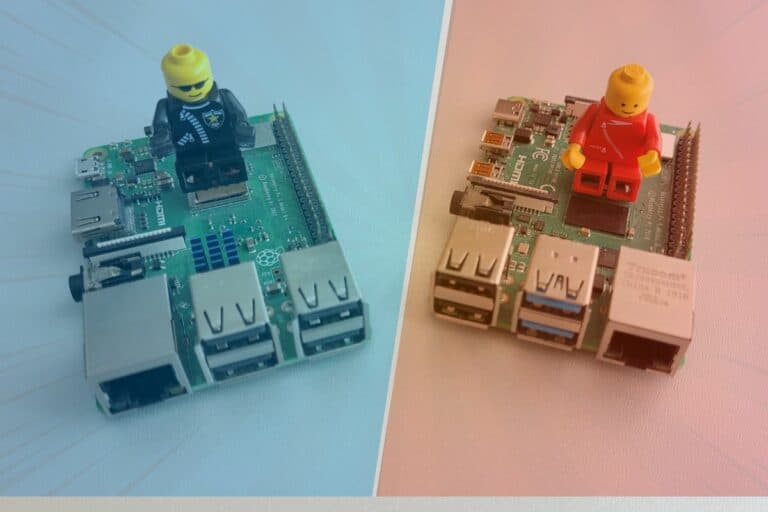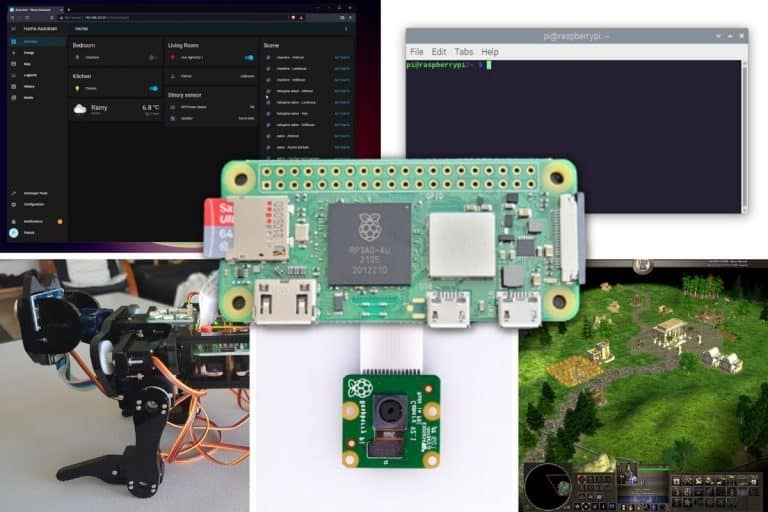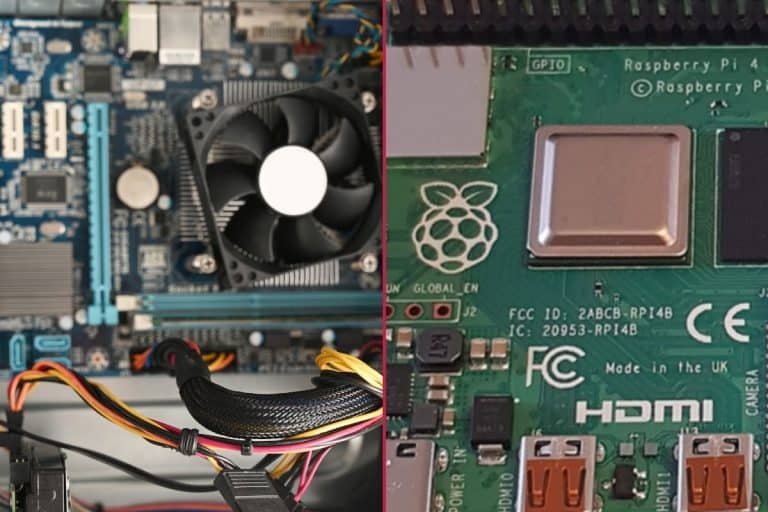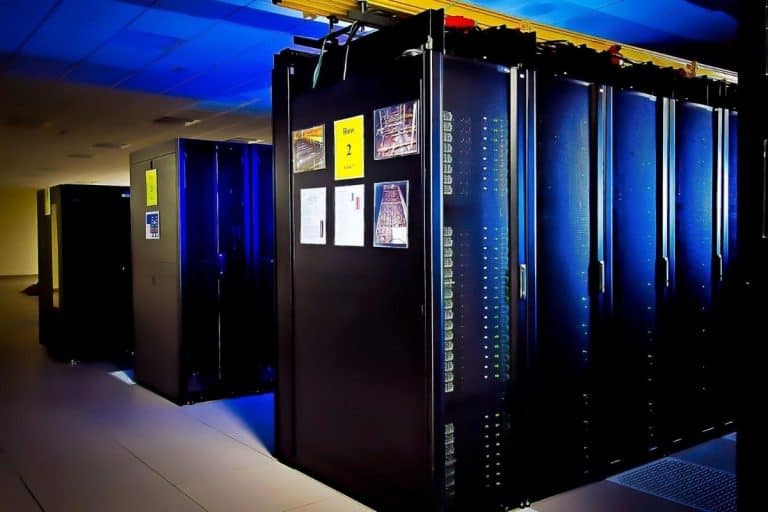Raspberry Pi 5 vs Pi 4: The Definitive Comparison & Review
Every time a new model comes out, we wonder if it’s worth upgrading (which often means starting from scratch) or if the previous model is good enough. While comparing specs is useful, understanding the real impact of our daily use is what matters. That’s why I decided to put the Raspberry Pi 5 to the test, not only to highlight the key differences, but more importantly, to see if it’s worth it for you (money + time).
Overall, the Raspberry Pi 5 beats the Raspberry Pi 4 in every way. It’s a complete upgrade from the previous version, with a significant performance boost. It also comes with new ports and features like the RP1 port, power button, and active cooler.
You probably already knew this, but does it really answer your question: “Do I need to buy one?”. I’ve used both and can give you my honest opinion. Let’s dive in. This is a long post, so feel free to use the table of contents below to get started quickly.
If you’re looking to quickly progress on Raspberry Pi, you can check out my e-book here. It’s a 30-day challenge where you learn one new thing every day until you become a Raspberry Pi expert. The first third of the book teaches you the basics, but the following chapters include projects you can try on your own.
Raspberry Pi 5 vs 4: Specifications Overview
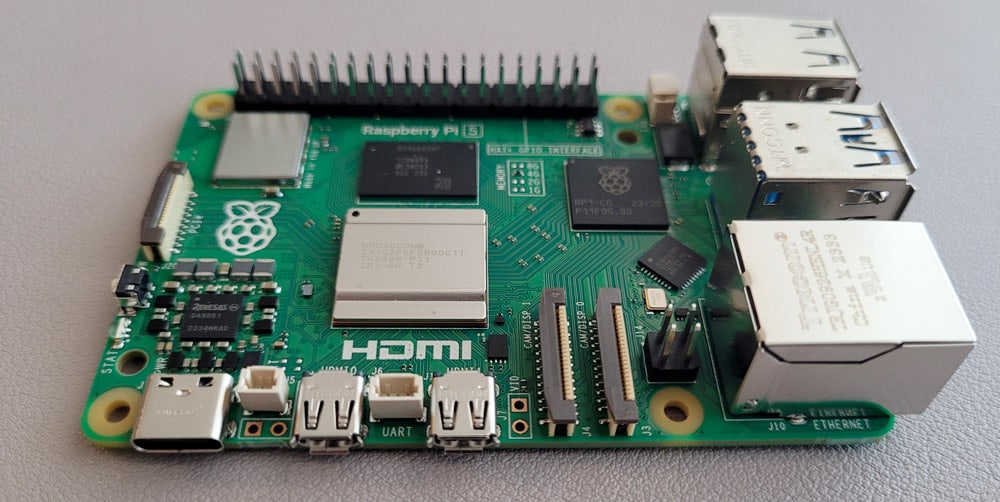
Overview
I don’t want to bother you with too many numbers and technical terms, but I have to start with this comparison chart that includes the technical specifications of both models. So here it is:
| Raspberry Pi 4 | Raspberry Pi 5 | |
|---|---|---|
| CPU | Broadcom BCM2711 Quad-core 64-bit @ 1.8 GHz | Broadcom BCM2712 Quad-core 64-bit @ 2.4GHz |
| GPU | VideoCore VI @ 500 MHz OpenGL ES 3.1, Vulkan 1.0 | VideoCore VII @ 800 MHz OpenGL ES 3.1, Vulkan 1.2 |
| Display output | 2x Micro-HDMI 4K @ 60Hz (single display) | 2x Micro-HDMI 4K @ 60Hz (dual displays) |
| Memory | LPDDR4-3200 SDRAM 1GB, 2GB, 4GB or 8GB | LPDDR4X-4267 SDRAM 4GB or 8GB |
| Network | Wi-Fi, Bluetooth, Gigabit Ethernet PoE enabled (with HAT) | Wi-Fi, Bluetooth, Gigabit Ethernet PoE enabled (with HAT) |
| USB ports | 2x USB 2.0 2x USB 3.0 | 2x USB 2.0 2x USB 3.0 @ 5Gbps |
| Other connectors | 40 pin GPIO header 2-lane MIPI DSI display port 2-lane MIPI CSI camera port Stereo audio and composite video port | 40-pin GPIO header 2-lane MIPI DSI display port 2-lane MIPI CSI camera port Stereo audio and composite video port |
| Storage | Micro-SD card slot | Micro-SD card slot M.2 SSD support (with HAT) |
| Power requirements | 5V/3A via USB-C (15W) | 5V/5A via USB-C (27W) |
| Special features | – | Power button Real-time clock (RTC) UART debug port |
| Price | $35 – $75 (depending on RAM amount) | $60 – $80 (depending on RAM amount) |
The main hardware differences between the Raspberry Pi 5 and 4B are that the Pi 5 has a faster CPU, better GPU, upgraded RAM, and new features and connectors. It comes with more power requirements, but the price is in a similar range.
Analysis
I’ll explain each major upgrade in more detail in the next section, and then we’ll discuss how it affects (or not) our everyday use. But on paper, this Raspberry Pi 5 is built on a similar foundation to the Raspberry Pi 4 but adds a nice boost to everything needed for demanding projects.
You can already see that adding (or changing) some connectors on the board, while keeping a similar form factor, came at a cost: there is no more jack audio port on the Pi 5, and you have to use different cables to use some connectors (like the camera).
If you’re wondering if you should upgrade from a Raspberry Pi 4, this is one important thing to keep in mind.
Key Differences Between Raspberry Pi 5 and Raspberry Pi 4
Let’s now focus on each of the differences this new Raspberry Pi model brings, and how they might affect your projects and real-world use.
Components
Ready to play a 7 differences game?
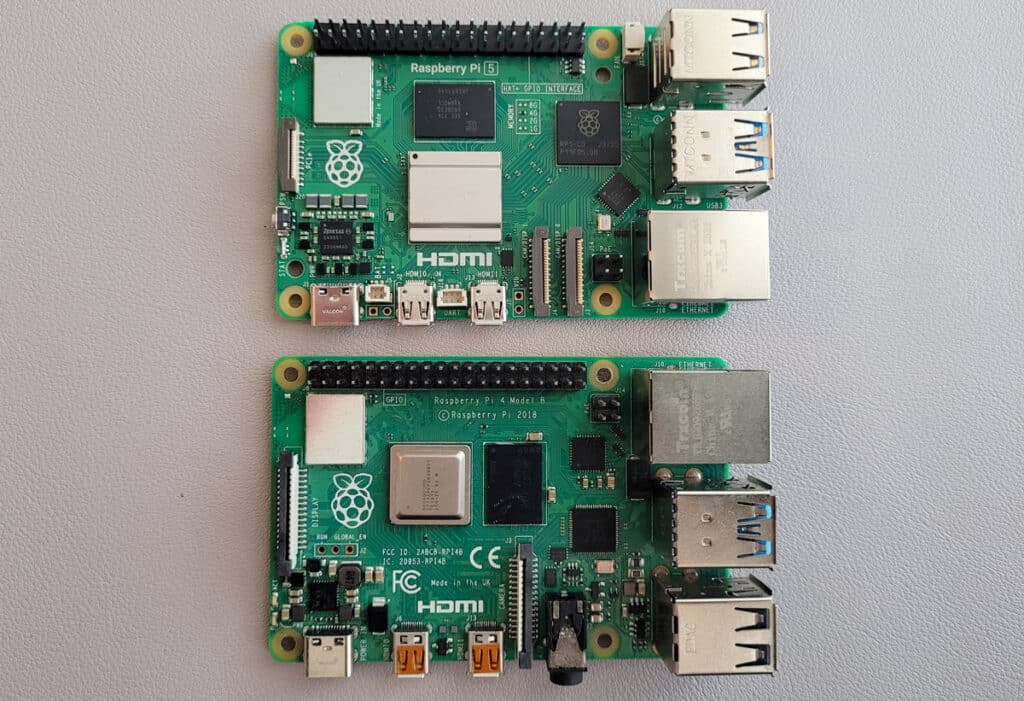
At first glance, it looks pretty similar, but I’m sure you’ll find a few changes just in the physical aspect. Don’t worry, I’ve done my job and will reveal all of the differences now :-).
Physical change
While the Raspberry Pi 4 and 5 share a similar form factor (e.g., same size: 85mm x 56mm), the Pi 5 has many subtle differences that can be seen at first glance.
For example, the USB and Ethernet ports are in reverse order. A Raspberry Pi 5 looks more like a Pi 3B+ from this angle:
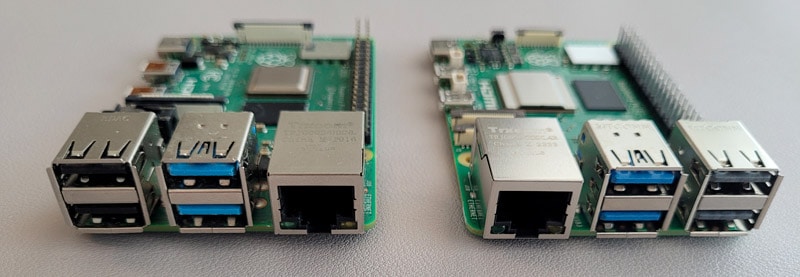
Comparing the two boards, you can also see that the connectors have changed, such as the camera and display ports. The Pi 5 also has new tiny connectors between the display ports.
Let’s take a tour of all the changes we can already see before we look at the specs.
Audio output
Raspberry Pi 5 doesn’t have an audio output jack. It has been completely removed from the board. This means that the only remaining options to get audio out of the Raspberry Pi are HDMI and Bluetooth.
If you plan to use your Pi as a media player, like with Volumio or something like that, this can be a problem. While most applications and systems can handle Bluetooth or HDMI output quite well, your sound system may not be compatible.
Camera & display ports
On Raspberry Pi 4 and most previous models, we had a camera connector near the audio port and a display connector on the other side, near the power input. Raspberry Pi 5 replaces them with two MIPI transceivers, both between the display and the Ethernet port.
If you are lost in all these new words and abbreviations, request my free Raspberry Pi glossary here (PDF format)!
Download now
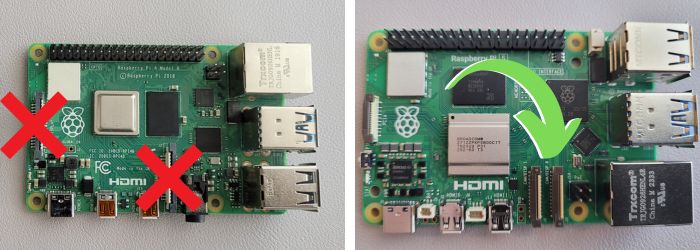
Overall, it’s a good upgrade. They take up less space, have upgraded specs, and allow you to connect two cameras to the same board. But it also means that you’ll have to use different cables to use them (as with the Pi Zero series).
Display output
While the dual display output may look different in the pictures, there are no major changes on this front. The Raspberry Pi 5 and 4 both come with two micro-HDMI ports that can be used for dual display.
The Raspberry Pi 5 offers a slight upgrade here, as you can now use both displays at 60 Hz, whereas the Pi 4 was limited to using one display at 60 Hz and the other at 30 Hz. But that’s a tiny change at this point, and who uses dual displays anyway?
RP1 chip
We don’t know much about its potential yet, but the Raspberry Pi 5 is also the first model to feature this new chip: the RP1. It’s meant to handle all the I/O operations, like the cameras, screens, USB devices and network connectivity.
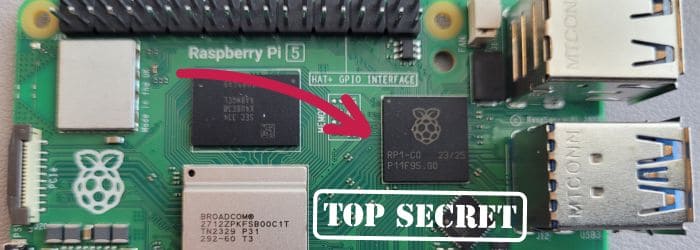
This chip makes the Raspberry Pi 5 better at connecting to different things, and it could lead to even cooler projects in the future. We’re waiting for the release of new HATs and accessories to understand the possibilities better.
Performances
Now let’s look at the performance boost, this is where the Raspberry Pi 5 shines and might make you want to upgrade.
Processor
The Raspberry Pi 5 comes with a new CPU, clocked at 2.4GHz instead of 1.8GHz for the Raspberry Pi (or even 1.5GHz for the first versions). It is still a quad-core processor, but the clock speed increase is really visible in real-use conditions.
We’ll see the results in the next section with all the benchmarks, but if you found the Pi 4 a little slow for some demanding tasks, or multitasking was still a problem, you’ll love the Pi 5.

When I did the test and used the Pi 5 for a week as my main computer, it was a game changer. Web browsing is much faster, multitasking is possible (and not just pausing one task while doing another), and more demanding applications run well on it.
Join Our Community!
Connect, learn, and grow with other Raspberry Pi enthusiasts. Support RaspberryTips and enjoy an ad-free reading experience. Get exclusive monthly video tutorials and many other benefits.
Learn moreAnd if you use your Pi for applications like crypto-mining or even running a Minecraft server on a single core, you’ll also notice significant improvements.
Memory
In terms of memory, the Raspberry Pi 5 uses a new standard (LPDDR4X instead of LPDDR4) but is available with similar amounts of RAM (4GB or 8GB). A 16GB version is expected soon but was not available at the time of writing.
Without going into too much detail here, LPDDR4X is the new standard. It brings similar performance but with lower power consumption and heat. Don’t expect a big change here (at least until the 16GB model is available).
GPU
The Raspberry Pi 5 also features a new GPU with an upgrade to the VideoCore VII, clocked at 800 MHz instead of 500 MHz on the Pi 4. It comes with support for Vulkan 1.2.
In real life, this mostly means better graphics performance and improved video playback (which was still a problem on the Pi 4). More about that in the benchmarks section.
Storage
Unfortunately, the Raspberry Pi 5 doesn’t have an M.2 SSD port and still relies on SD cards as its main storage. As with the Pi 4, USB boot and SSD HATs can be used, but it’s not the default option.
However, the Raspberry Pi 5 has a PCI Express connector that allows you to connect faster devices (certified for Gen 2.0 speeds), and we can already find some extensions using this connector.
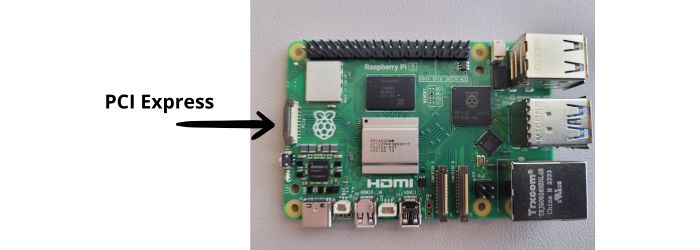
It’s also worth mentioning that the Raspberry Pi 5 is supposed to increase the speed of SD cards and USB drives. I put this to the test because I didn’t understand why, but you’ll see that it’s not a lie (see the benchmark section for the results).
Power management
Power requirements
All these new features and performance improvements come at a price: power requirements have increased (again). So you’ll need a new power supply if you’re upgrading from any Raspberry Pi model to Pi 5.
The Pi 5 will boot with an older power supply (so don’t worry if you forgot to add one to your order), but you need the official power supply to get the best results.
It requires a 27W USB-C power supply, which is not common for smartphones and tablets, so you’ll probably need one. I highly recommend the official model to make sure you don’t get low voltage warnings or worse, damage your new device.
You can get it from Amazon or any official reseller where you buy your Raspberry Pi 5.
Power usage
Also, expect increased power consumption in all situations (even idle), as all of the component changes listed above have an impact on it.
For most people, this won’t matter too much; the Raspberry Pi 5 is still a power-efficient device. Just keep this in mind if you are running one on battery power, like for robotic kits, wildlife cameras, or similar projects.
Power button
And good news, after more than 10 years, the Raspberry Pi 5 finally has a power button! This means you can turn it on and off like any traditional computer.
The button is located near the power connector. One click will start the Raspberry Pi, two clicks will shut it down, and a long press will force it to stop.
Temperature & cooling
It was almost the case with the Raspberry Pi 4, but thinking about temperature and cooling solutions for the Raspberry Pi 5 is almost mandatory. The new CPU and GPU contribute to this, and you need to keep it cool if you want to get the best performance, not just at startup, but for the long haul.
Thankfully, the manufacturer of the Raspberry Pi has thought of this. The Raspberry Pi 5 includes a fan connector that allows us to plug in this new accessory: the active cooler. It’s a large heat sink with a fan on top. It only runs when it’s needed, so it’s silent during normal use.
If you are lost in all these new words and abbreviations, request my free Raspberry Pi glossary here (PDF format)!
Download now
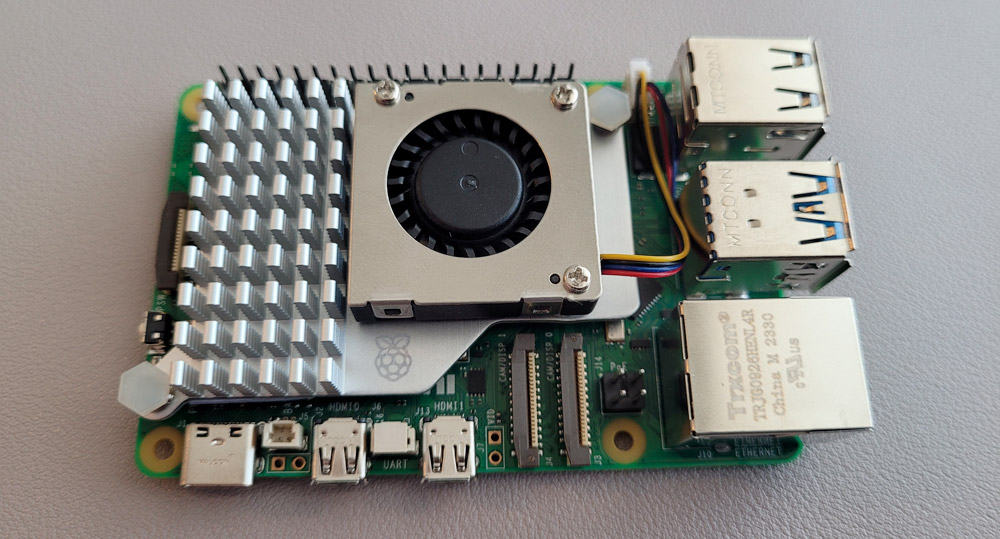
Everything is handled directly by the system (at least for Raspberry Pi OS and Ubuntu), so you don’t have to worry about it.
The active cooler is not included when you buy the Raspberry Pi 5, so it’s an extra cost to consider. Depending on your application, you can get this or another solution (like heatsinks or a passive case). But I would recommend at least one option for most projects.
Pricing
Speaking of which, how much does a Raspberry Pi 5 cost compared to previous models?
The Raspberry Pi 5 is slightly more expensive than the Raspberry Pi 4 but remains affordable compared to the alternatives. Starting at $60 for 4GB and $80 for 8GB, it’s about $5 more than the Pi 4 for a comparable amount of memory.
You can get your Pi 5 from Amazon, but be careful not to pay too much. If stock is low, it might be better to get it from an official reseller instead.
More on that topic here: Why Are Raspberry Pis So Expensive? (+Tips to get one cheap).
Raspberry Pi 5 vs. Raspberry Pi 4 Benchmark (and what it really means)
I don’t want to bother you too much with scores and various numbers that are hard to associate with real experience. But I will give them to prove my point, and each time tell you what they mean to the end user (you!).
Overall results
If you compare the results of the Raspberry Pi 5 to the Raspberry Pi 4 using a tool like Geekbench (which tests different use cases and gives you the difference as a percentage), you’ll see a 200 to 300% performance increase at almost every level.
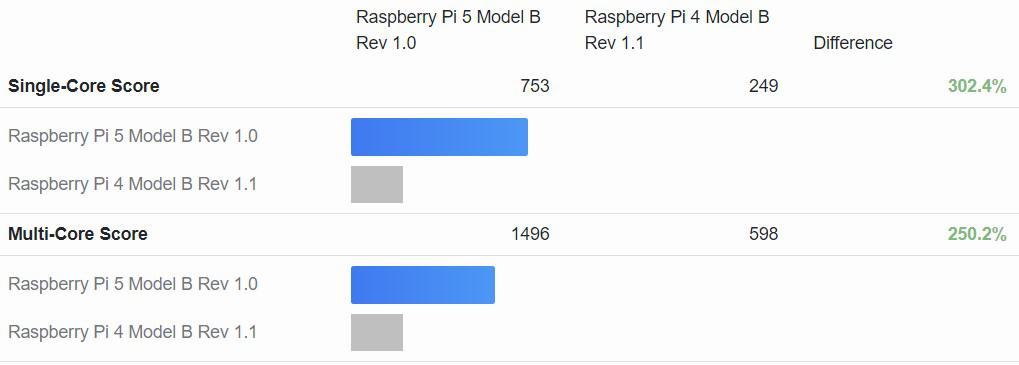
So I can confirm the manufacturer’s promise of a 2 to 3 times performance boost on all levels. Whether you look at single-core, multi-core or various tests like file compression, the results are clear: the Pi 5 is much faster at everything.

And this is not only visible in benchmarks. The boot time is impressive, and when you use it, it’s obvious that everything runs faster. For example, when I still have to use my Raspberry Pi 4 to write tutorials about applications that don’t work on the Raspberry Pi 5, I feel it’s slow.
If you are curious, you can check the full results here: Raspberry Pi 5 vs Raspberry Pi 4.
To get a better sense of what I’m talking about, I recommend reading my experiments with both models, where I tried to use a Raspberry Pi 4, and then a Raspberry Pi 5 for a week or so, as my main computer. My impressions after each test are different:
- Can a Raspberry Pi 4 really replace your Desktop PC? (I Tried)
- Can a Raspberry Pi 5 Replace Your Main PC? I Tested It!
Web browser
If we focus on this type of use (PC with desktop environment), there is a quick test we can run to quickly compare the two devices.
Speedometer is an interesting browser benchmark tool that measures the responsiveness of web applications. It gives you a score, basically telling you how fast your browser goes.

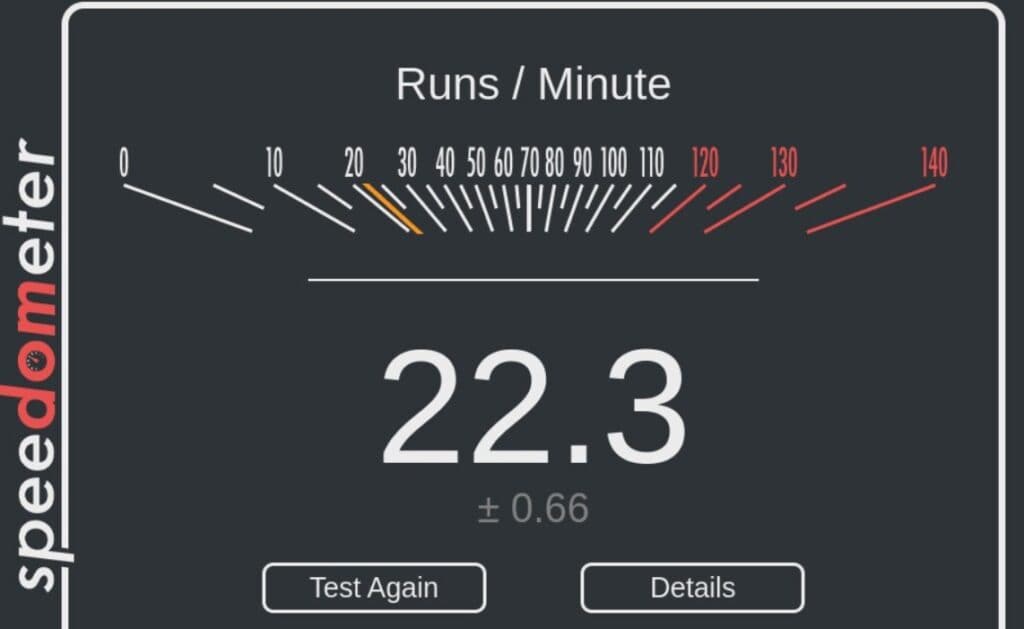
You can see the Raspberry Pi 5 results on the left (around 57) and the Raspberry Pi 4 results on the right (around 22). So it’s 2 to 3 times more responsive to browse the web with a Raspberry Pi 5 than a Raspberry Pi 4.
| Device | Speedometer results |
|---|---|
| Raspberry Pi 4 | 22.3 |
| Raspberry Pi 5 | 57.1 |
| Traditional computer (i7, 16GB) | 142 |
I did this test with Chromium, using other web browsers may affect the results, but you get the idea. For context, I got 142 on my laptop. So the Raspberry Pi 5 is still limited compared to a traditional PC, but it’s still an impressive boost in comparison.
Storage
I’ve read about this, but I didn’t believe it. In the news, it says that while the Raspberry Pi still uses an SD card slot, it was expected to get a performance boost in terms of read and write speed.
Well, after doing the usual tests, I have to confirm, this is true.
| Test | Raspberry Pi 4 | Raspberry Pi 5 |
|---|---|---|
| Read speed | 45.7 MB/s | 91.7 MB/s |
| Write speed | 16.4 MB/s | 17.9 MB/s |
| Unzip firmware | 4.229s | 2.632s |
| Time to boot (SD card) | 15.17s | 6.88s |
Reading files on the Raspberry Pi 5 is about twice as fast as on the Raspberry Pi 4, using the same SD card. Writing speed is similar on both models.
In real life, this means that everything will be faster: boot time, extracting compressed files, and overall system usage. If you can add this memory speed boost to the other component changes, it explains a lot about the previous results (everything is 2-3x faster).
Video & games
One of the main remaining limitations of a Raspberry Pi 4 was playing HD video. It wasn’t a problem for browsing YouTube in windowed mode or normal quality, but it was terrible for full-screen 1080p video, with a lot of dropped frames.
Thanks to the new CPU & GPU, the Raspberry Pi 5 can play HD videos on YouTube with almost no frame drop. It’s a game changer for media center projects using Raspberry Pi.


For this test, I played the same video for a few seconds on both models (1080, full screen). You can see in YouTube’s “stats for nerd” feature that the Raspberry Pi 4 dropped about 15% of the frames (which is noticeable when you watch the video), while the Pi 5 dropped almost nothing.
I haven’t tried many games on the Pi 5, and it’s hard to really compare the results, it’s more a feeling than hard data. But I recently updated my tutorial on how to run Quake on Raspberry Pi, and it was incredible. Quake is barely playable on a Pi 4 and runs perfectly on a Pi 5.
Power usage
As mentioned earlier, the Raspberry Pi 5 requires more power juice than the Raspberry Pi 4, but it remains decent compared to a traditional computer.
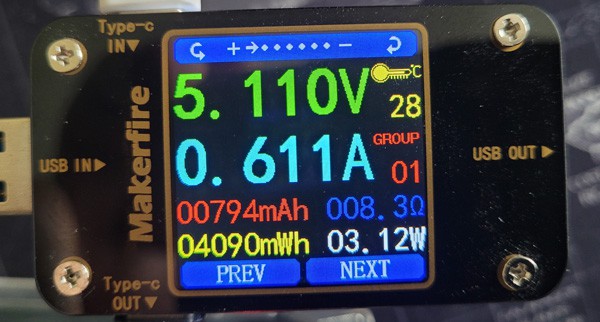
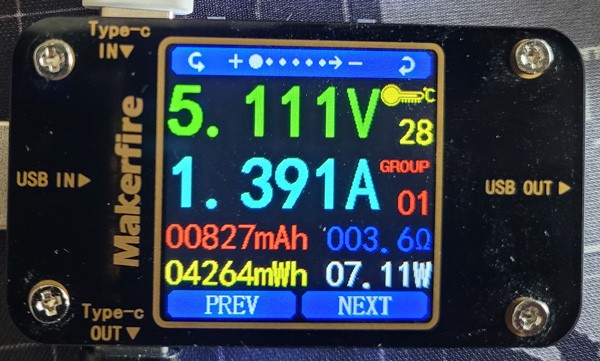
We’ll need a little more hindsight and experience with different types of projects to know if this is a problem or not, but I don’t think it is. Most users keep their Raspberry Pi plugged in, and even on battery power, I don’t think it will have much of an impact (and the Pi Zero 2 is there!).
One thing I feel it’s important to mention is that after using my Raspberry Pi 5 for weeks, I never experienced the “low voltage warning” that I regularly get with the Pi 4 (even with the official power supply). I think there was a real problem with the Pi 4 that seems to be fixed for good with this model.
Related: How to Power a Raspberry Pi: Pro Tips for Every Use.
It's a free PDF guide containing every Raspberry Pi Linux command you should know!
Download now
Should you get a Raspberry Pi 5?
Now that you have a better understanding of the key differences between the Raspberry Pi 5 and the Raspberry Pi 4, is the Raspberry Pi 5 worth your money, or can you pass on / find a better deal?
For new buyers
If you’re new to the Raspberry Pi world, and looking for your first model: get a Raspberry Pi 5 if you can afford it. It’s the best option available right now, there is no doubt about it.
The Raspberry Pi 4 is still listed at a similar price, so while it may be sufficient for many projects, it’s just not worth it to buy this older version currently.
If you’re on a budget, it might be worth considering the Raspberry Pi Zero 2 W as your first purchase. It’s much more limited than the Pi 5, but it may be enough for some projects at a third of the price.
You can get them from Amazon (links below) or any official reseller:
Related article: Which Raspberry Pi Model To Buy: A Complete Guide.
For Raspberry Pi 4 owners
If you already own a Raspberry Pi 4, the decision is a bit more complicated.
Upgrading to a Raspberry Pi 5 from an existing Pi 4 setup will likely require you to reinstall your system, applications, and projects. It will also mean buying new accessories like the new power supply, a new enclosure, and maybe different cables.
So it’s worth taking the time to think about. While it’s a great upgrade for desktop use and demanding projects, it’s not necessarily necessary for many other types of use (like servers or simple Python projects). The extra cost and time may not be worth it.
If you see a potential use, are interested, and can afford it, go for it, you’ll love this new model. But if you are limited by time or budget, you might want to wait a bit, perhaps for the 16GB version or better accessories that are likely to come soon.
Special considerations
Two things I need to mention to help you make a choice:
- The Raspberry Pi 5 can only run on the latest version of Debian (Bookworm). So, systems like Raspberry Pi OS or Ubuntu require a recent version, and many systems won’t work (yet). The same for applications, not all of them are supported. Make sure to check the compatibility of your project before buying one.
- The Raspberry Pi 5 uses more power than any other model. If you’re building some kind of robot, weather station or any project that runs on batteries, it may not be a good idea to use this model.
And as mentioned before, you’ll need different camera cables for the Raspberry Pi 5. They’re really cheap, but don’t forget to add them to your order ;-).
It's a free PDF guide containing every Raspberry Pi Linux command you should know!
Download now
Want to chat with other Raspberry Pi enthusiasts? Join the community, share your current projects and ask for help directly in the forums.
TLDR: Summary & General Recommendation
Ok, that was a long post, so let’s summarize the whole thing if you’re busy and want the short version.
Overall, the Raspberry Pi 5 is the most powerful Raspberry Pi currently available and is priced in the same range as the Pi 4. It’s highly recommended for new users. However, Pi 4 owners may need to consider the additional cost and time required to upgrade.
Here is a summary of this article in digestible bullet points:
- Significant performance boost: The Raspberry Pi 5 outperforms the Pi 4 in every way (2-3x faster).
- New features: In addition to the performance boost, the Pi 5 comes with interesting new features (power button, RP1, fan connector, etc.).
- New Raspberry Pi users should get one if they can afford it.
- Upgrading from Pi 4 to Pi 5 involves not only the cost of the new board but also additional costs for accessories and time to switch to the new operating system, as well as potential compatibility issues.
Stay tuned for more projects and tutorials using the Raspberry Pi 5 ;-).
Whenever you’re ready, here are other ways I can help you:
The RaspberryTips Community: If you want to hang out with me and other Raspberry Pi fans, you can join the community. I share exclusive tutorials and behind-the-scenes content there. Premium members can also visit the website without ads.
Master your Raspberry Pi in 30 days: If you are looking for the best tips to become an expert on Raspberry Pi, this book is for you. Learn useful Linux skills and practice multiple projects with step-by-step guides.
The Raspberry Pi Bootcamp: Understand everything about the Raspberry Pi, stop searching for help all the time, and finally enjoy completing your projects.
Master Python on Raspberry Pi: Create, understand, and improve any Python script for your Raspberry Pi. Learn the essentials step-by-step without losing time understanding useless concepts.
You can also find all my recommendations for tools and hardware on this page.

